This option is used to calculate depth bands/ranges between two tins and either temporarily colour a view or create coloured faces in a model.
Continue down the page to see the Tins Depths Colour Panel options.
To view the Tin Depths Colour Panel, Use: Tins => Colour => Tins Depths Colour
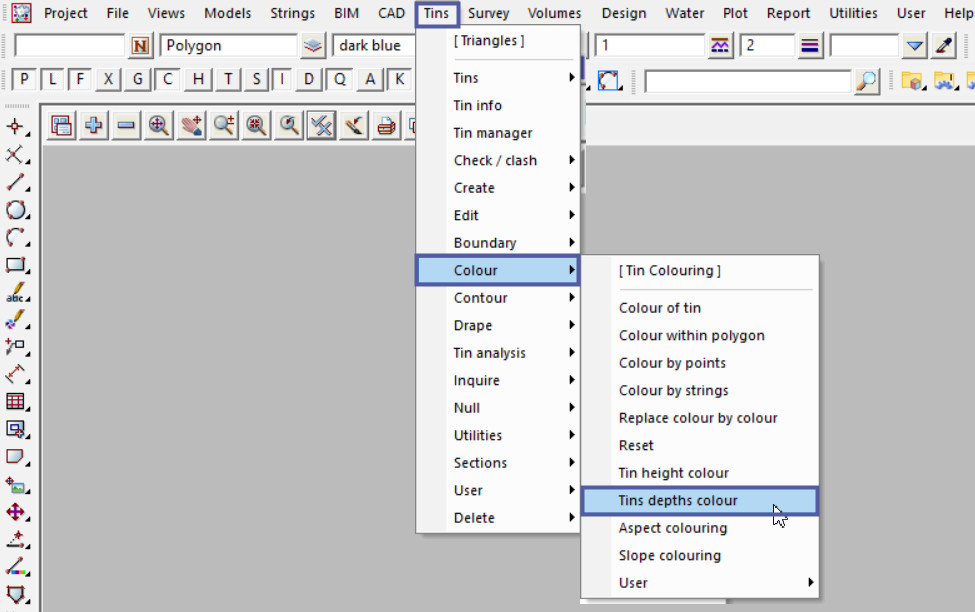
Pick the <Original Tin> button and select the tin required.
Pick the <New Tin> button and select the tin required.
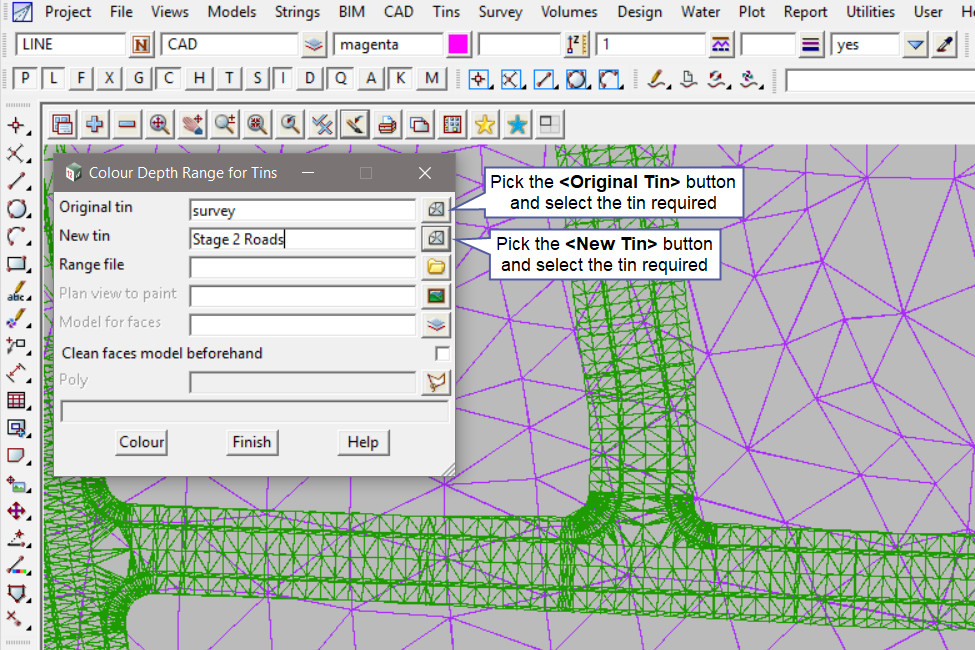
Pick the <Range File> button and then walk right on the [Lib] (Library) directory, and select the ‘Range_Depths_at_0.1m_interval.drf’ file.
Note: The [Lib] (Library) directory always contains the files that are provided with the 12d Model program. These files can be exactly what you are looking for and be used straight away, or a great example file that can be used to create the file required.
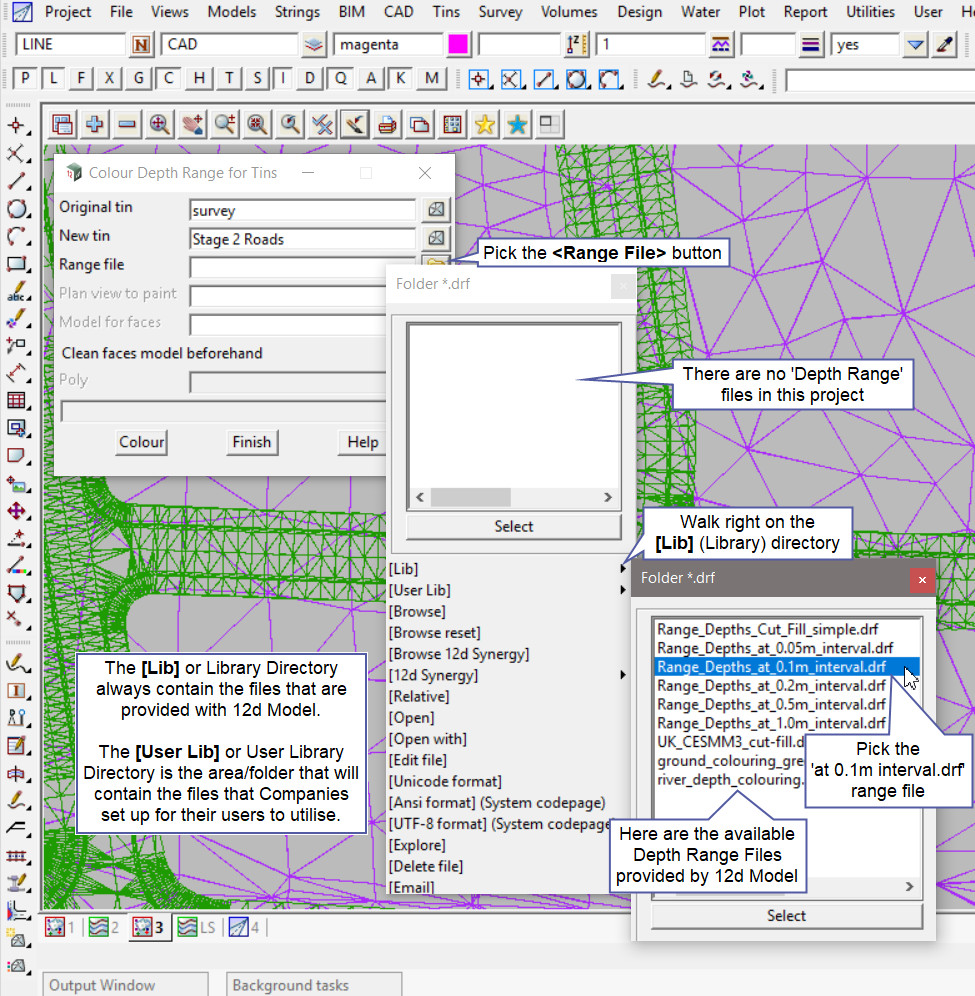
Pick the <Plan View to Paint> button and select the view to be coloured based on colours in the depth range file.
Hit the <Colour> button and on the view selected (make sure you have it active) the depth range bands will colour the tin. Each different colour displayed is 0.1m in depth between the two selected tins, the colours are listed in the depth range file.
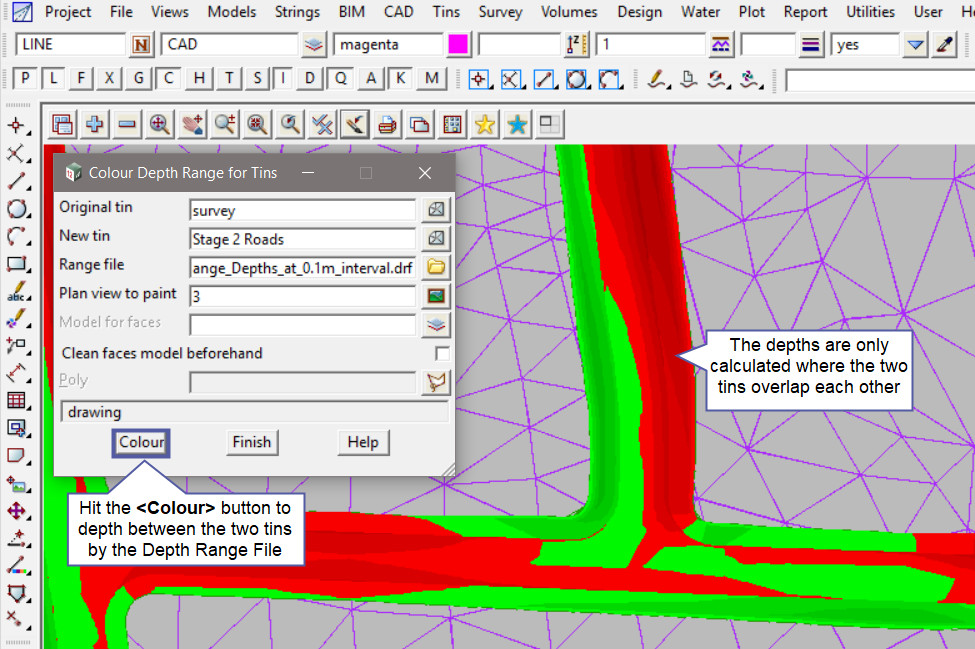
The image below is showing that the depth range colours have disappeared from the ‘3’ view. When the depth range colours are only painted on the view, if the view is changed, ie panned, zoomed etc, the colours will disappear as they are only a temporary display.
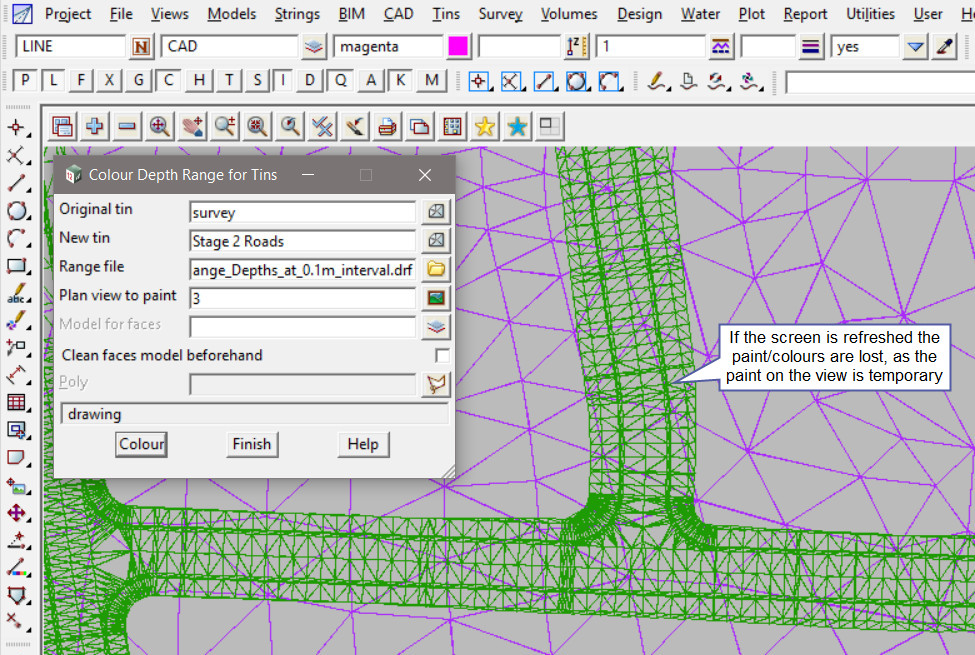
Remove the <View> from the panel (highlight and delete).
Either type in a new model name or pick the <Model> button and select a model from the drop down list.
Hit the <Colour> button to create the faces in the model.
Turn on the model to see that the faces have been created – even check them out with the string inquire option.
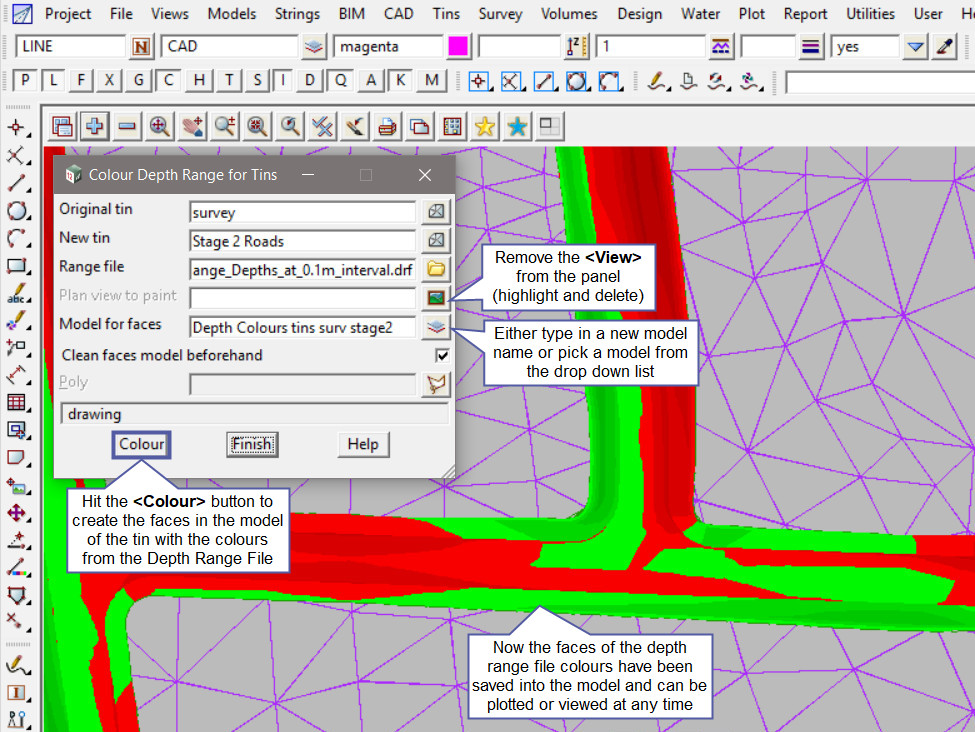
Tick the <Clean faces model beforehand> option and each time the panel is run the model will be deleted/cleaned, then the faces are recreated.
Use the ‘Poly’ option to create the faces within a polygon. This example has drawn a rectangle, by right clicking on the <Polygon> button and selecting the rectangle option.
Hit the <Colour> button to re-run the panel, and as shown below the faces have only been created within the rectangle. This is a good option as the faces that are created by this option use a lot of points, and if you only have a small points license, the points can be used very quickly.
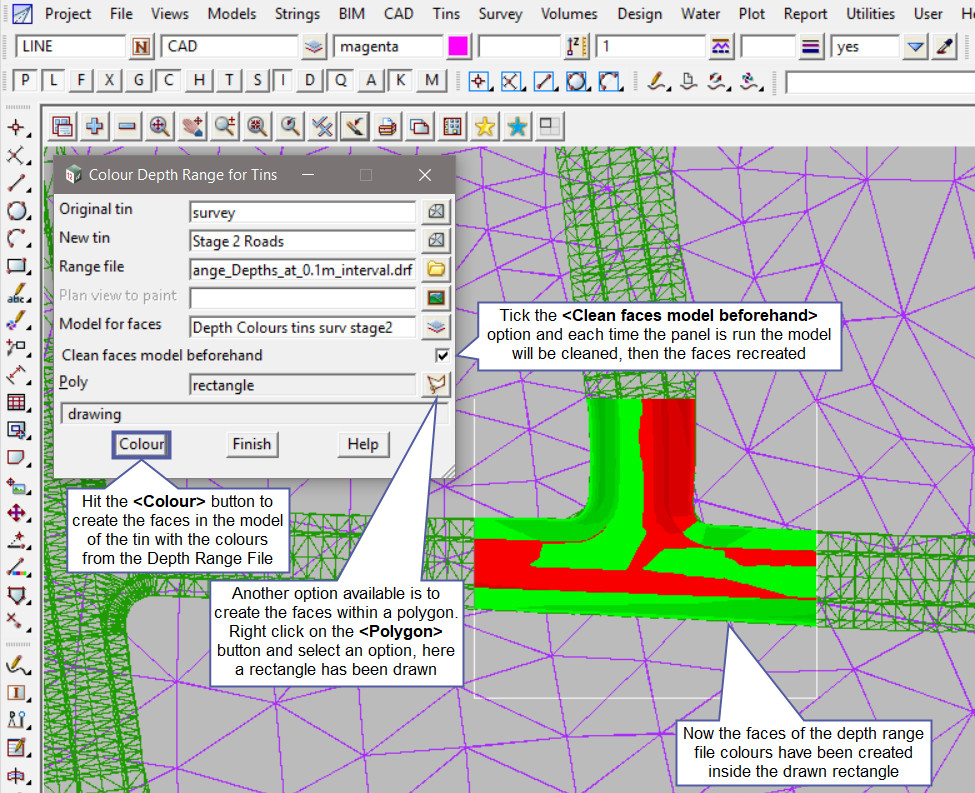
To open the Depth Range file to view its contents, pick the <Range File> button and then select the [Open] option from the list.

The Depth Range File panel will open and have the file shown.
In this example there is a different set of graduated colours for each 1 metre of depth between the two tins. Each colour is graduated by 10 different shades, depicting 0.1m of depth.
If you would like to learn more about the Depth Range File Panel and how to utilise it,
Visit this post: Depth Range File
